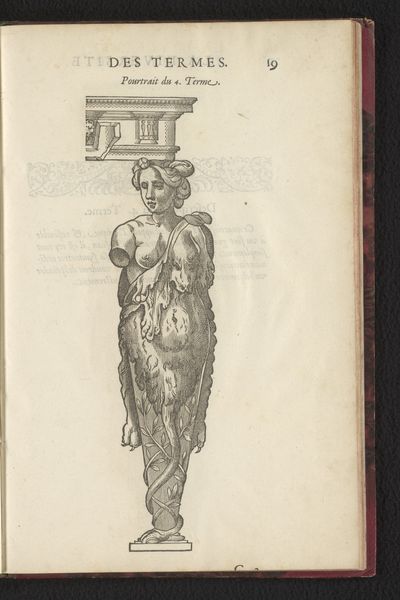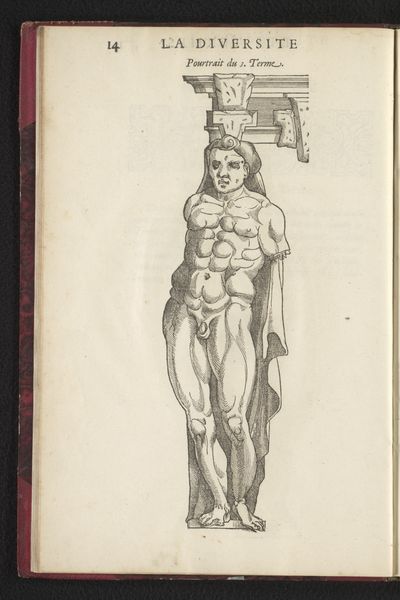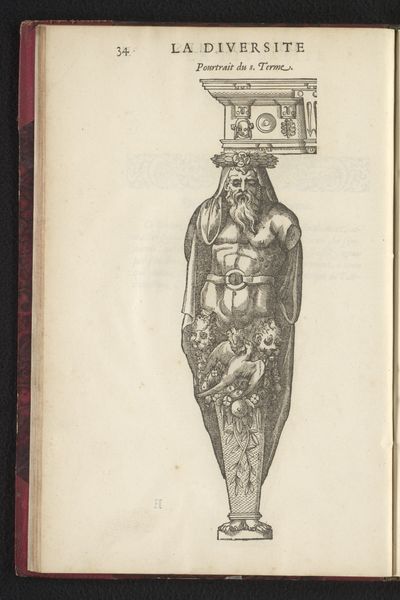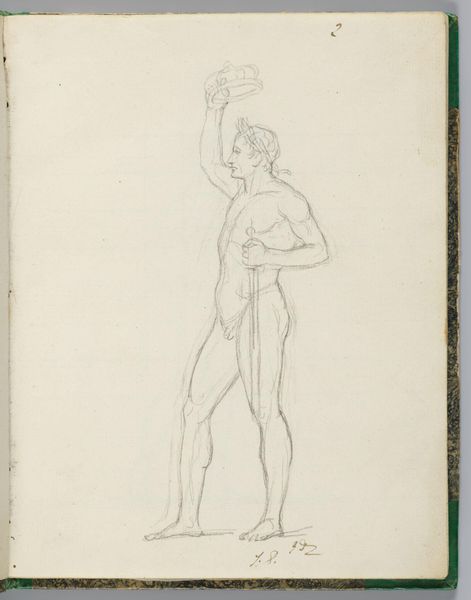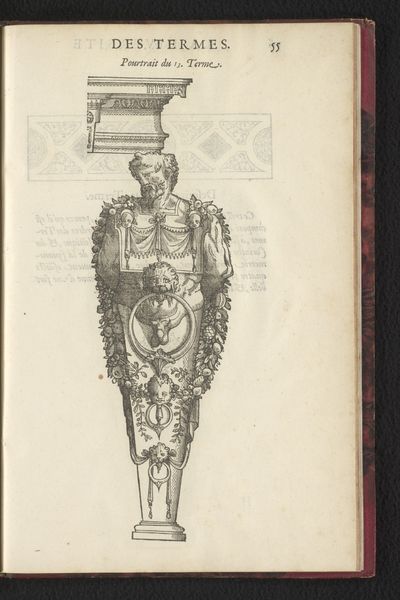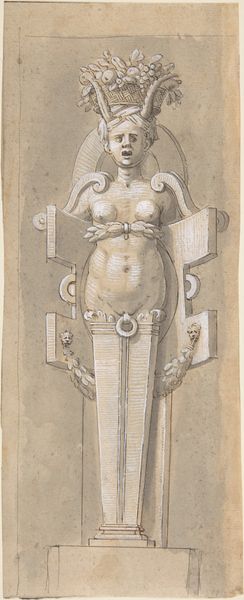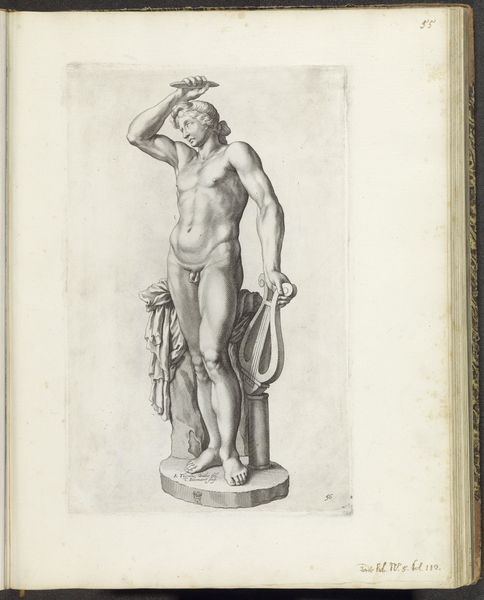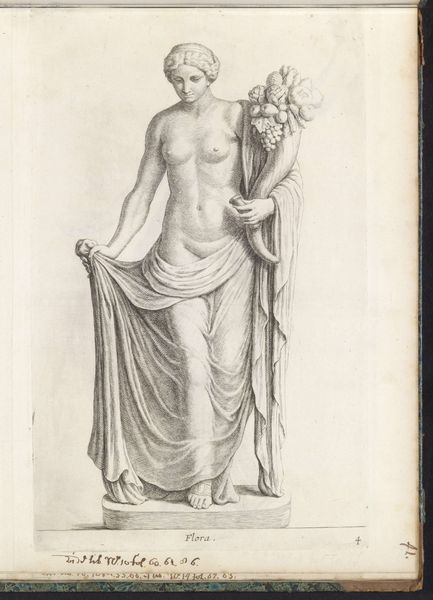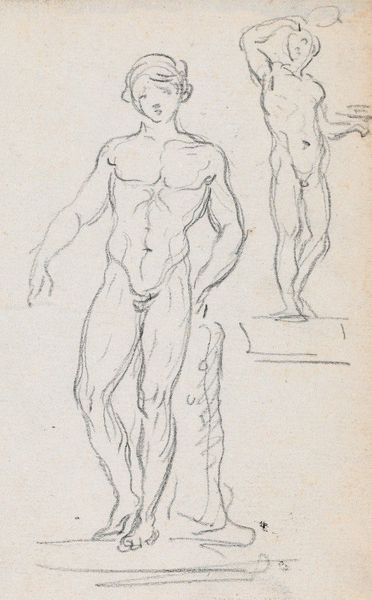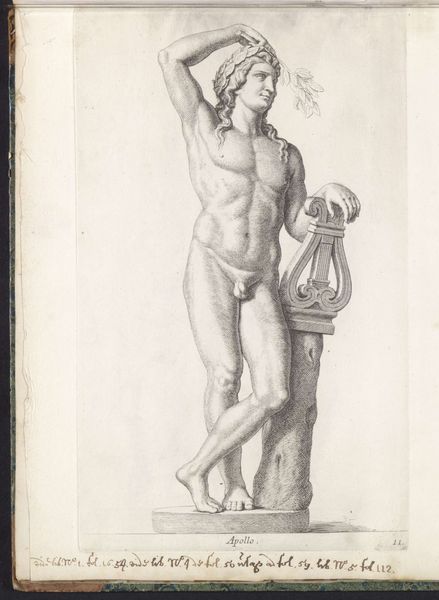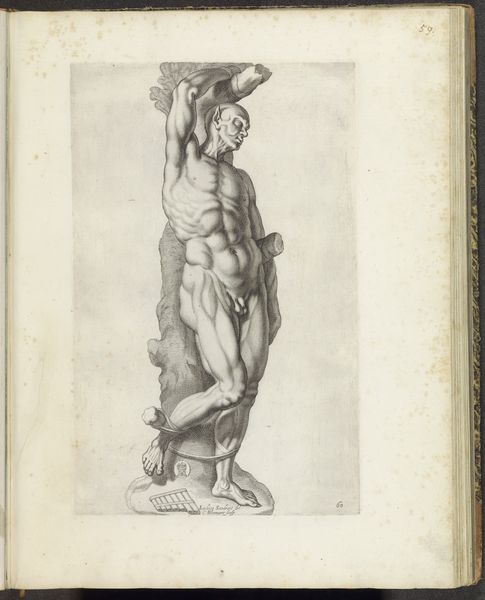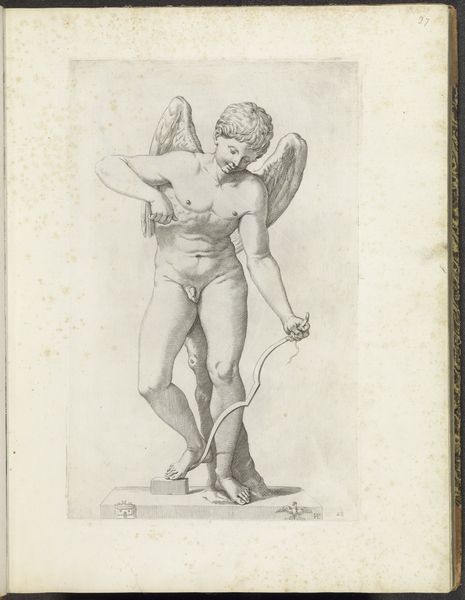
drawing, paper, engraving
#
portrait
#
drawing
#
imaginative character sketch
#
pen sketch
#
sketch book
#
figuration
#
paper
#
form
#
11_renaissance
#
personal sketchbook
#
idea generation sketch
#
pen-ink sketch
#
line
#
pen work
#
sketchbook drawing
#
storyboard and sketchbook work
#
academic-art
#
italian-renaissance
#
nude
#
sketchbook art
#
engraving
Dimensions: height 308 mm, width 201 mm
Copyright: Rijks Museum: Open Domain
Editor: This drawing, "Vrouwelijke term met hoofddoek en mantel," from 1572, presents a partially nude female figure rendered in what appears to be pen and ink. It's intriguing, but also a bit unsettling. How do you interpret this work, particularly within its historical context? Curator: That’s a great starting point. This image engages with the concept of the female body within a very specific historical lens, raising complex questions about representation and power. We must ask: who was this image intended for, and what purpose did it serve? How does the artist’s decision to depict the figure as both nude and draped in fabric reflect the cultural anxieties of the time? Editor: Cultural anxieties? Can you expand on that? Curator: Certainly. Consider the status of women in the Renaissance. They were often reduced to symbols – mothers, wives, muses – rarely granted agency of their own. The partial nudity combined with the head covering might be seen as a visual negotiation – or perhaps a struggle – between the idealized and the controlled female form. Does the head covering diminish or heighten the sexualisation? Is there some degree of consent assumed? Editor: That makes me think about the male gaze and who controlled these images... Curator: Precisely. Who benefited from these representations, and what narratives did they perpetuate? This drawing offers a powerful lens through which to examine gender dynamics in the Renaissance, the complexities of female identity and the inherent power structures embedded within artistic representation. We need to challenge the accepted histories and amplify marginalized voices that provide alternative narratives and deconstruct dominant interpretations. Editor: This has given me a completely different perspective on this Renaissance drawing, and it opens new doors to understand its nuances. Curator: Indeed, art isn't created in a vacuum; it's intrinsically linked to its socio-political surroundings. By critically analyzing such works, we can learn much about the past – and, importantly, about ourselves in the present.
Comments
No comments
Be the first to comment and join the conversation on the ultimate creative platform.
